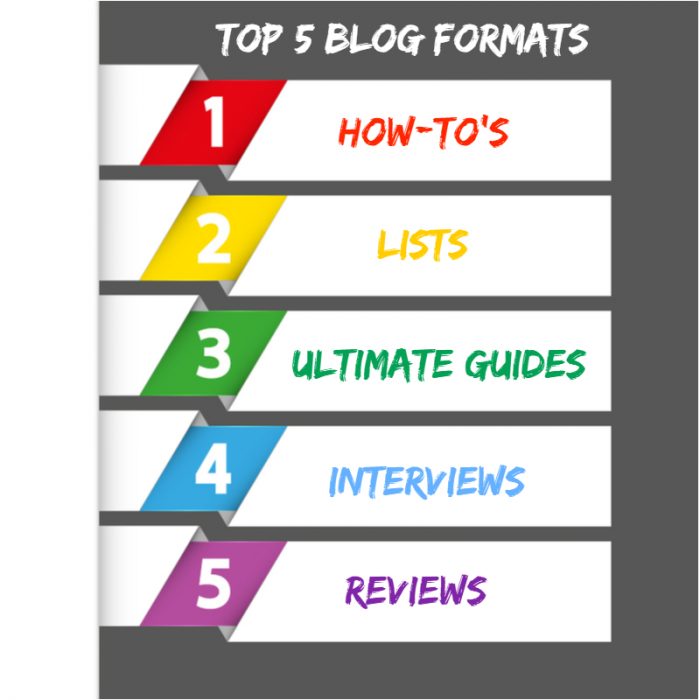The SEO Blogger’s Guide To Blogging Like A Winner

Blogging is the key to creating consistent content that proves your industry authority to Google and audiences alike. When it comes to playing the game of search engine optimization (SEO), content is one of the biggest pieces of the puzzle. Having an urge to write epic blog posts is great, but if you’ve never contributed to a blog before, coming up with a lot of great content can be a daunting task. The team at Dallas SEO Dogs hates to see digital marketing effort flounder—especially due to lack of content. That’s why we’re giving you a peek behind the curtain with our SEO blogger’s guide to simply getting started writing blogs. Yes, there’s a ton of on-page SEO involved when it comes to optimizing blogs, but that’s another guide for another day! So relax, get your writing gears going… and start thinking about ideas for your first blog as we show you the ropes.
Get Organized with Your Blogging!
The first step to blogging is simple. Get organized and think about why you’re writing this blog in the first place. A blog for a business should be so much more than just a stream of consciousness (as novices sometimes think it should be)! Your content should:
- Always have a purpose;
- Be clear on its intent from the start;
- Have a target audience in mind; and
- Be something that can be shared throughout a community.
Your blog posts should comply with each of these rules. That’s why thoughtful organization is so important. To come up with relevant ideas, use keyword research, check out what the competition is focused on, and take note of current talking points in your industry. The story is always out there—now it’s your job to get it to your audience in a format that catches their eye!

Come Up with a Blogging Style that Works
The way you blog matters! There are many ways to get a point across and prove your authority in an industry. Not every blog needs to be an essay, because not every reader has the time to comb through 1200 plus words. The average reader will only have time to read 28% of the text presented on their screen. This is why your blogging style has to work for you! Your blogging style can change from post to post. To keep things interesting and maximize engagement and SEO, consider these popular blog types:
Popular Blog Types
1. How-To’s
Everyone searches the web to find a way to solve problems. From fixing broken plumbing to conducting a site audit, “how-to” guides can be very helpful. By writing in this style, you show your audience that you have the know-how to help them solve their problem. Don’t worry—a brief post giving your audience a free sample of your industry knowledge won’t drive customers away. In fact, these posts establish your credibility and will help keep your business top of mind when a reader later runs into a more complex matter you might be able to help them with.
2. Lists
Not only are lists a great way to streamline information and great for your user experience (UX)—they also earn links from other sites, which boost your site’s rankings. List posts that show a “Top X” or “Checklist of Things You Need For…” are popular because readers can easily jump to the ideas that interest them most, and they’re curious about the opinions of experts (like you). Create the perfect list blog by creating a post that:
- Goes beyond a top 10 or stops at an odd number. Obscurity attracts the eye!
- Shows off your knowledge in a subject
- Is relevant and informative
- Is quickly scannable!
3. “Ultimate Guides”
Much like the post you’re reading now, ultimate guides are long-form posts! Sometimes readers want to go beyond the quick 500-word post and really deep-dive into a topic. The trick to these blog posts is to keep them organized and scannable, even though they are longer formats (1000 words and up). Ultimate guides are a way to truly solidify yourself as an expert in an industry! They are also perfect for getting the right keywords, semantics, and links evenly spread out in a post. Many writers may be concerned about the offputting thought of writing beyond 500-words and losing their readers. However, some ways to keep your readers on track with this style can be found in these practices:
- Multiple Bullet-Points;
- Strategic and Clear Headlines; and
- Quick Paragraphs.
4. Interviews
Some of SEO Dogs’ most-read client content have been one-on-one interviews discussing the state of the client’s industry or just telling a story about their business. Even if interview posts don’t really offer a service or advice on a topic, they are excellent at humanizing the business and give customers a face to remember when they do need industry-related services.
5. Reviews
Reviews of your industry’s “latest and greatest” show that you’re always up-to-date and looking for ways to improve your services. Even if you find that your views go against the grain of what other writers are saying, getting a voice out there about a trending topic is a smart move for boosting your SEO.

Do Your Research
Even if you are the go-to business for whatever service you offer, always do your research on a blog topic. This is your chance to confirm that your post is accurate and useful for readers. It also never hurts to be a constant student in your field. Extensive research can help you discover new views on your blog topic that could help expand some of the ideas already in place.
Make Your Voice Unique, Even if You’re Repurposing
Sure, you’re probably not the first person to think about the specific post you have in mind. There are also probably several other posts that have helped craft your blog’s thought points. As long as you aren’t plagiarizing, this is okay! Inspiration is excellent for creating a unique spark that makes your blog post shine. Your brand’s unique voice is what will make or break your blog. Don’t be afraid to add in your personal experiences and triumphs with regard to your subject.
Size Matters!
Did you know that the average first-page Google result is over 2,000 words?! The length of your blog posts is a big deal—especially when you’re writing with SEO in mind. It’s easy to bang out a quick 500-word blog and be left with these questions.
- Did you really give all the information you could have?
- Did 500 words really give you ample keyword opportunities?
- Were you able to get truly good internal linking in your content?
- Would anyone want to share this or link to it?
The size of your content determines how these questions are answered. The solution is simple—longer posts help you accomplish your goals and meet your optimization standards!
Don’t Forget to Be a Visual Storyteller
Remember these words: Your. Blog. Does. Not. Succeed. On. Words. Alone. That’s right, remember to include visuals in your posts. Readers will need something to look at aside from your words! Make the eye candy count. Stock photos will take up space, but the cream of the crop in this section really comes in through:
- Infographics;
- Videos;
- Self-shot, original photos; and
- Data-driven imagery.

Gain More Traffic With Consistent Posts
By following these starting points, you’ll be well on the way to creating posts that appeal to your audience, earn more shares and links, and establish you as an authority. If you find that epic blogging is too time-consuming, you can always hire a great content team to do it for you. Might we suggest Dallas SEO Dogs?
